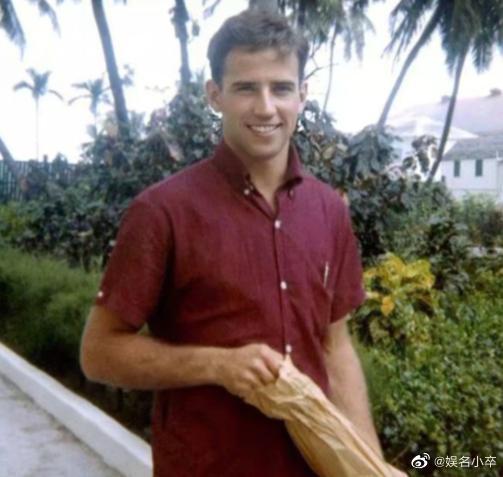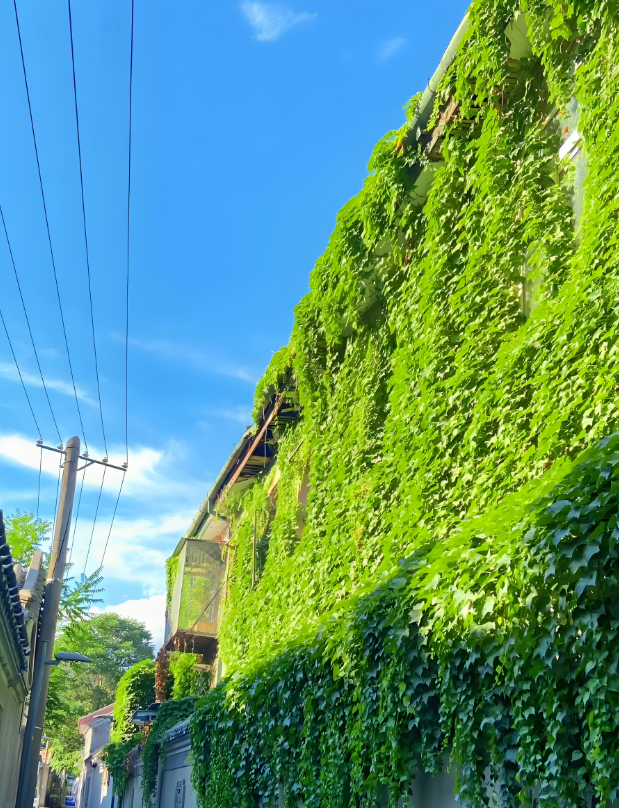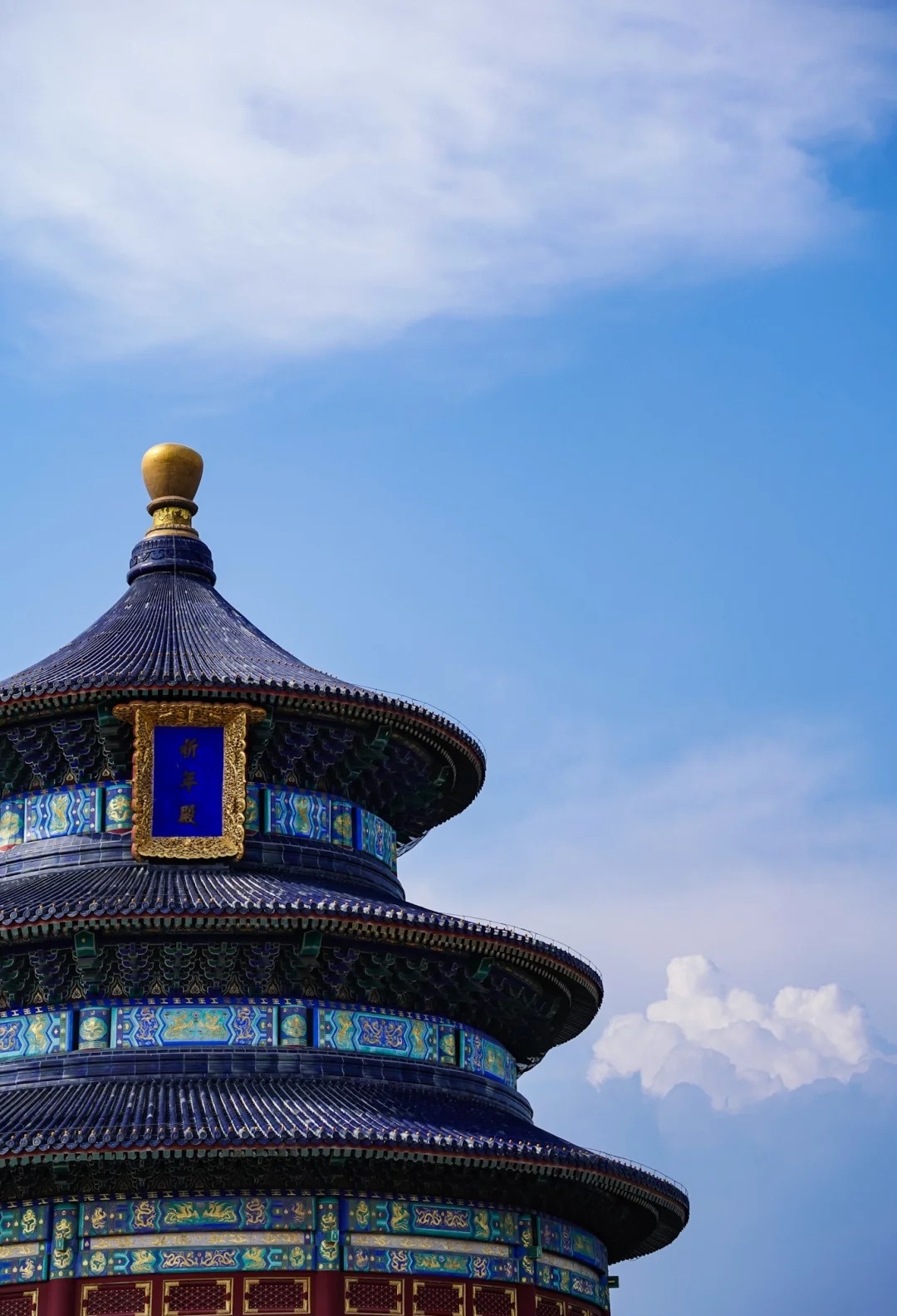
Temple of Heaven
It is the place where emperors of the Ming and Qing dynasties held ceremonies to "offer sacrifices to heaven" and "pray for a good harvest", and it is located on the east side of the Beijing Central Axis. The Temple of Heaven is one of the largest existing ancient sacrificial building complexes in China. Its unique architectural style and rich cultural connotations attract many tourists.
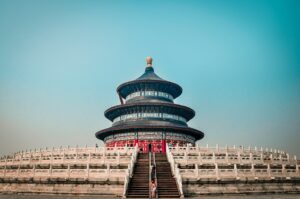
1. Why Visit the Temple of Heaven?
A UNESCO World Heritage Site blending imperial grandeur with ancient cosmological beliefs, the Temple of Heaven is a masterpiece of Ming architecture and a spiritual gateway to China’s agricultural past.
The Temple of Heaven is not just a scenic park but a profound symbol of China’s philosophical and cultural legacy. Built for emperors to pray for harvests and divine favor, its harmonious design reflects the sacred relationship between heaven, earth, and humanity. Visitors today can marvel at its precision-engineered acoustics, stroll through ancient cypress forests, and witness living traditions like tai chi and kite flying.
2. History and Layout of the Temple of Heaven
a. Historical Significance
Constructed in 1420 during the Ming Dynasty, the Temple of Heaven underwent major renovations in the 18th and 19th centuries. It served as the imperial altar for "worshipping heaven" and "praying for grain" , rituals vital to ensuring agricultural prosperity in a society reliant on harvests.
b. Architectural Layout
The complex spans 273 hectares and features two enclosed areas: the Outer Altar (open spaces and forests) and the Inner Altar (ceremonial buildings).
-
Northern Circular Symbolism: The Hall of Prayer for Good Harvests (祈年殿) stands in the circular northern section, representing heaven.
-
Southern Square Symbolism: The Circular Mound Altar (圜丘坛) lies in the square southern section, symbolizing earth.
-
Axis of Power: A 360-meter Sacred Path (丹陛桥) connects the two altars, forming a 1.2-kilometer north-south axis flanked by ancient cypress trees.
3. Itinerary and Key Attractions
a. Suggested Route (3–4 hours)
Start at the East Gate → Hall of Prayer for Good Harvests → Imperial Vault of Heaven (皇穹宇) and Echo Wall (回音壁) → Circular Mound Altar → Danbi Bridge → Divine Kitchen and Palace of Abstinence (斋宫).
b. Must-See Sights
-
Hall of Prayer for Good Harvests: A triple-eaved, blue-tiled marvel symbolizing the seasons, months, and celestial stars. Its 28 pillars represent 4 seasons, 12 months, 12 traditional hours (1 traditional hour= 2 hours), and 28 celestial constellations.
-
Circular Mound Altar: A three-tiered marble terrace with 9 layers of stones (representing the heavens). Note: Avoid standing on the central “Heavenly Heart Stone” (天心石), reserved for ceremonial use.
-
Echo Wall: Whisper into the wall to experience its acoustic magic.Danbi Bridge: Walk the elevated path once reserved for emperors.Central path: Reserved for the “Jade Emperor” (皇天上帝).East path: Emperors only.West path: Officials and princes.
4. Unique Experiences
a. Evening Illumination
The Hall of Prayer glows golden during light-up nights (Fri, Sat, and festivals) from 6:00 PM–9:00 PM after sunset.
5. Travel Tips
a. Tickets and Hours
-
Apr–Oct: ¥15 (park), ¥34 (combo);
-
Nov–Mar: ¥10 (park), ¥28 (combo).
-
Apr–Oct Opening hour:
Park 6:00 AM–22:00 PM , last entry 21:00 PM;
Attrations 8:00 AM- 18:00 PM, last entry 17:30 PM;
-
Nov–Mar Opening hour:Park 6:30 AM–22:00 PM , last entry 21:00 PM;Attrations 8:00 AM- 17:00 PM, last entry 16:30 PM;(Attractions close every Monday).
b. Automatic guide
-
Place:Four gates of the park
-
Time: 8:15 to 18:00(Apr. 1 to Oct. 31), 8:30 to 17:00(Nov. 1 to Mar. 31)
-
Language:Chinese、English、French、Spanish 、German、Russian 、Japanese、Korean、 Portuguese 、Italian and so on.
-
Charge:Rent: RMB ¥40;Deposit:RMB ¥50
c. Service center
-
Temple of Heaven Park currently has three visitor service centers: the North Gate Visitor Service Center, Danbi Bridge Visitor Service Center, and South Gate Tour Guide Office.
-
These centers primarily provide tourists with reception services such as consultation, guided tours, and complaint handling, along with free amenities including drinking water, wheelchair access, first-aid kits, sewing kits, and nursing rooms. (Guide service requires reservations 2 days in advance. Tel:010-67025289.)
d. Nearby Attractions
-
Hongqiao Pearl Market (1 km, 15-min walk): Bargain for pearls and souvenirs.
-
Tianqiao Performing Arts Center (2 km, 10-min taxi): Traditional Chinese opera shows.
e. Distance to Other Landmarks
-
Forbidden City (8 km): Take Metro Line 1 to Tiananmen East Station (20 mins).
-
Summer Palace (25 km): Taxi (¥80–¥100) or Metro Line 4 to Beigongmen Station.
6. Accommodation and Transportation
a. Beijing Hotels Near Temple of Heaven
-
Luxury (15–20 mins walk):
-
The Imperial Mansion (¥1,500–¥3,000/night).
-
Grand Metropark Hotel (¥1,200–¥2,500/night).
-
-
Mid-Range (10–15 mins walk):
-
Tiantan Hotel (¥600–¥1,000/night).
-
Orange Hotel (¥400–¥800/night).
-
-
Budget (20–25 mins walk):
-
7 Days Inn (¥200–¥400/nig ht).
-
Hanting Express (¥150–¥300/night).
-
b. Getting There
-
Metro: Line 5 to Tiantan Dongmen Station (Exit A).
-
Bus: Routes 36, 120, or 958 to Tiantan Nanmen.
-
Taxi: Show “天坛东门” (East Gate) to drivers.
c. Photo Hotspots
-
Hall of Prayer Reflection: Capture the night view from the west wall of the hall.
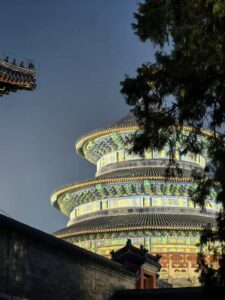
7. Final Thoughts
The Temple of Heaven transcends time, offering a rare blend of architectural genius, spiritual depth, and serene natural beauty. Whether you’re tracing imperial footsteps at dawn or marveling at its illuminated splendor, this sacred site remains a timeless testament to China’s reverence for harmony between humanity and the cosmos.
Overview
Info
Review
